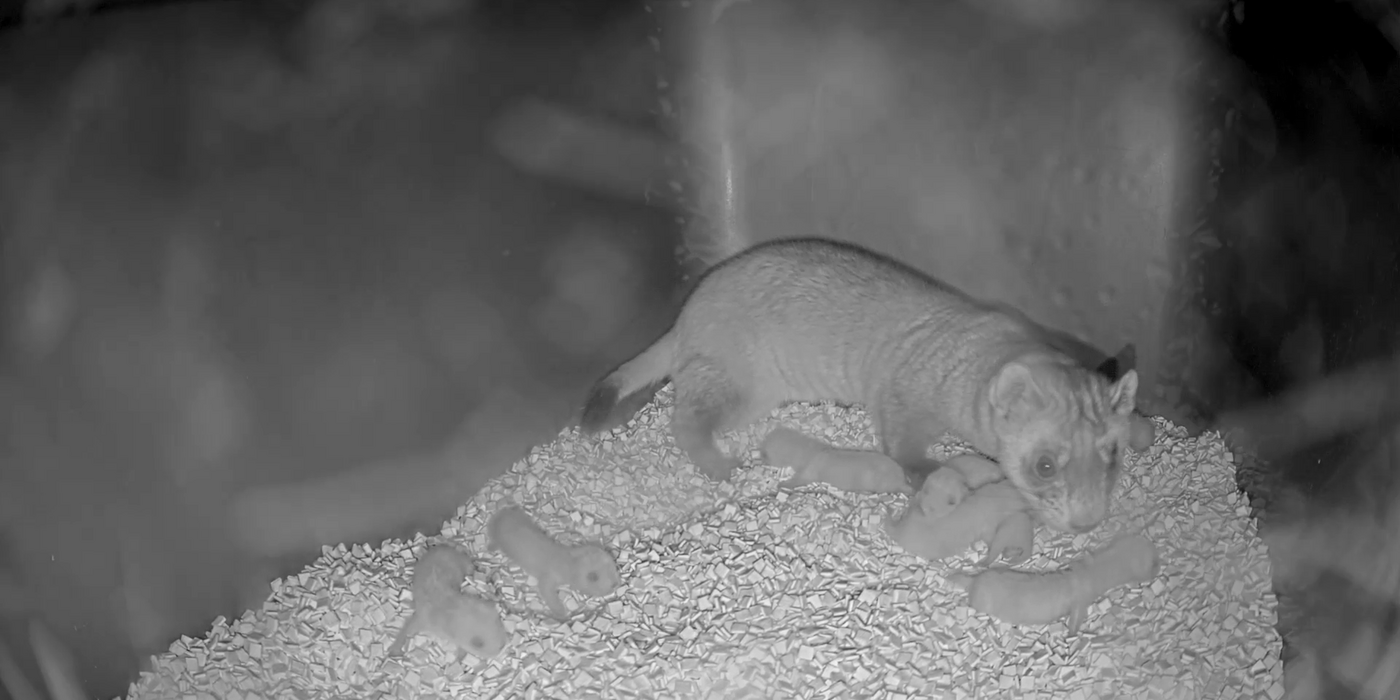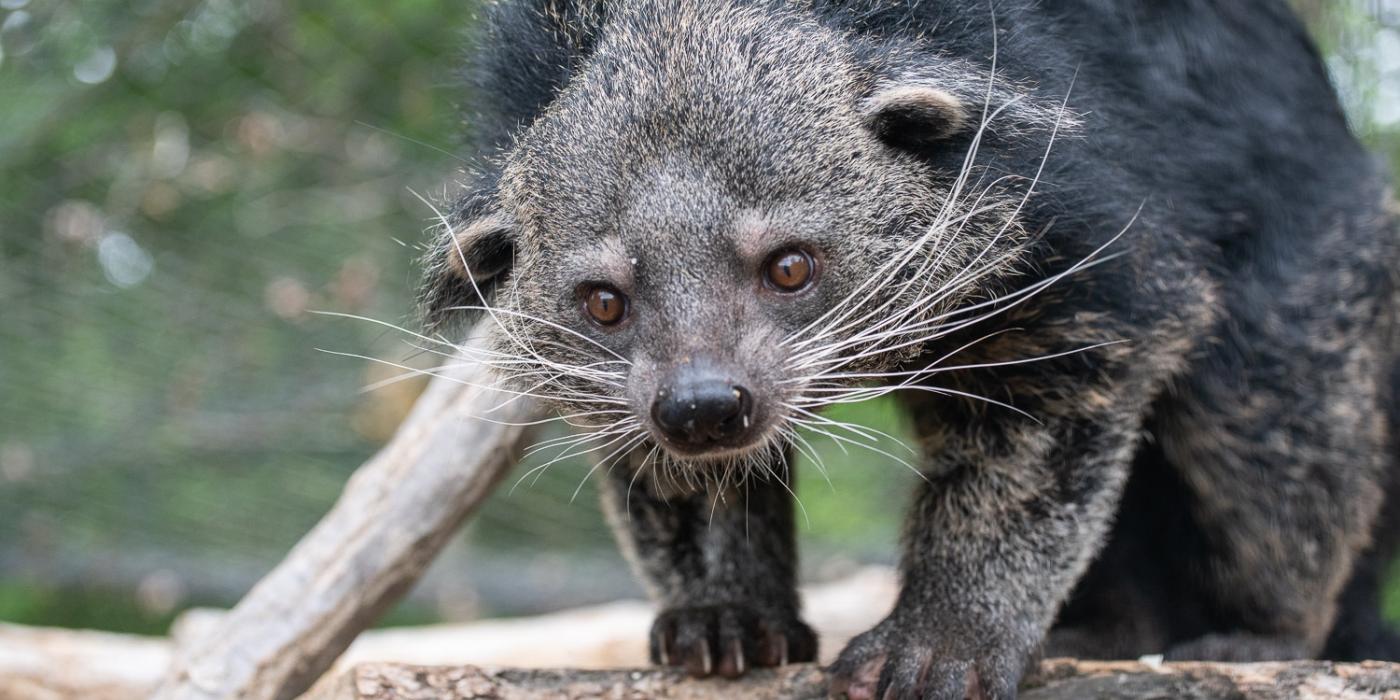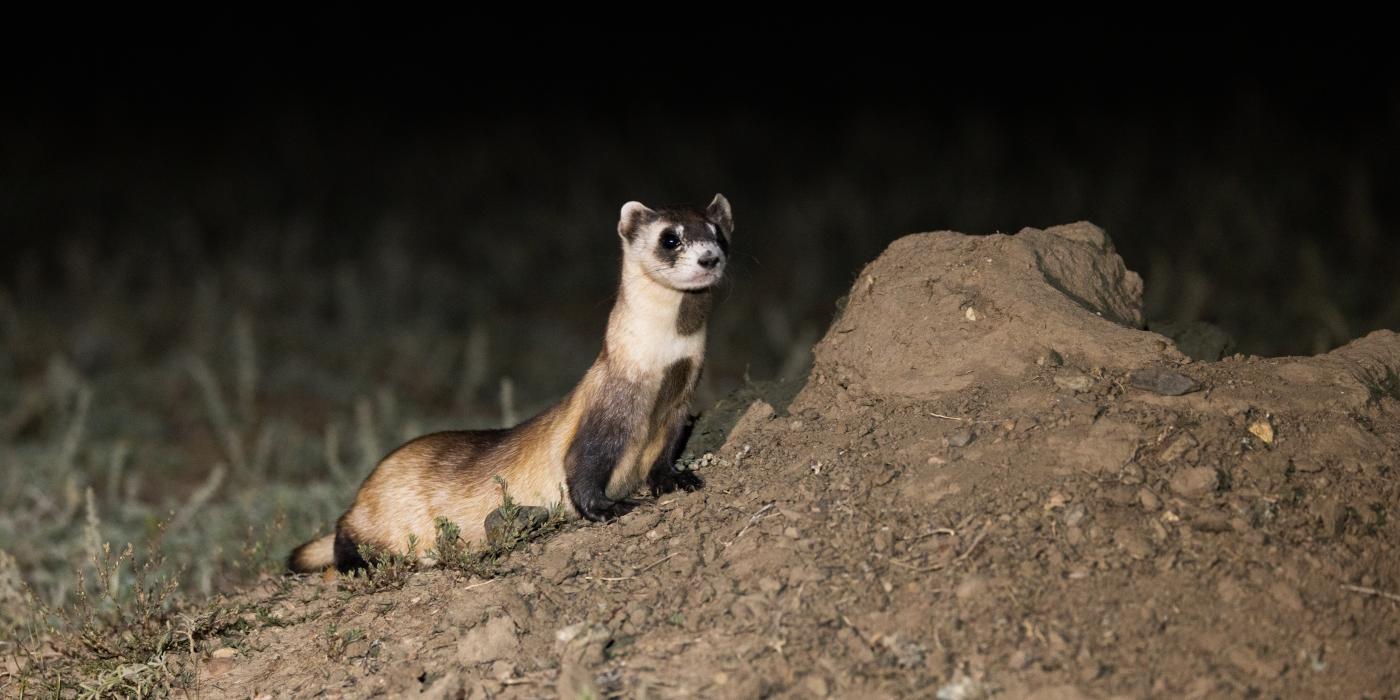Small Enrichment, Big Difference: How to Care for Small Mammals

From smart shrews to clever coatis, each animal in the Smithsonian’s National Zoo’s Small Mammal House receives enrichment. Keeper Ann Gutowski, who recently received the Lee Houts Advancement in Enrichment award from the American Association of Zoo Keepers, shares how the animal care team puts together puzzle feeders, sprinkles spices and comes up with creative elements that ensure their animals keep physically active and mentally sharp.
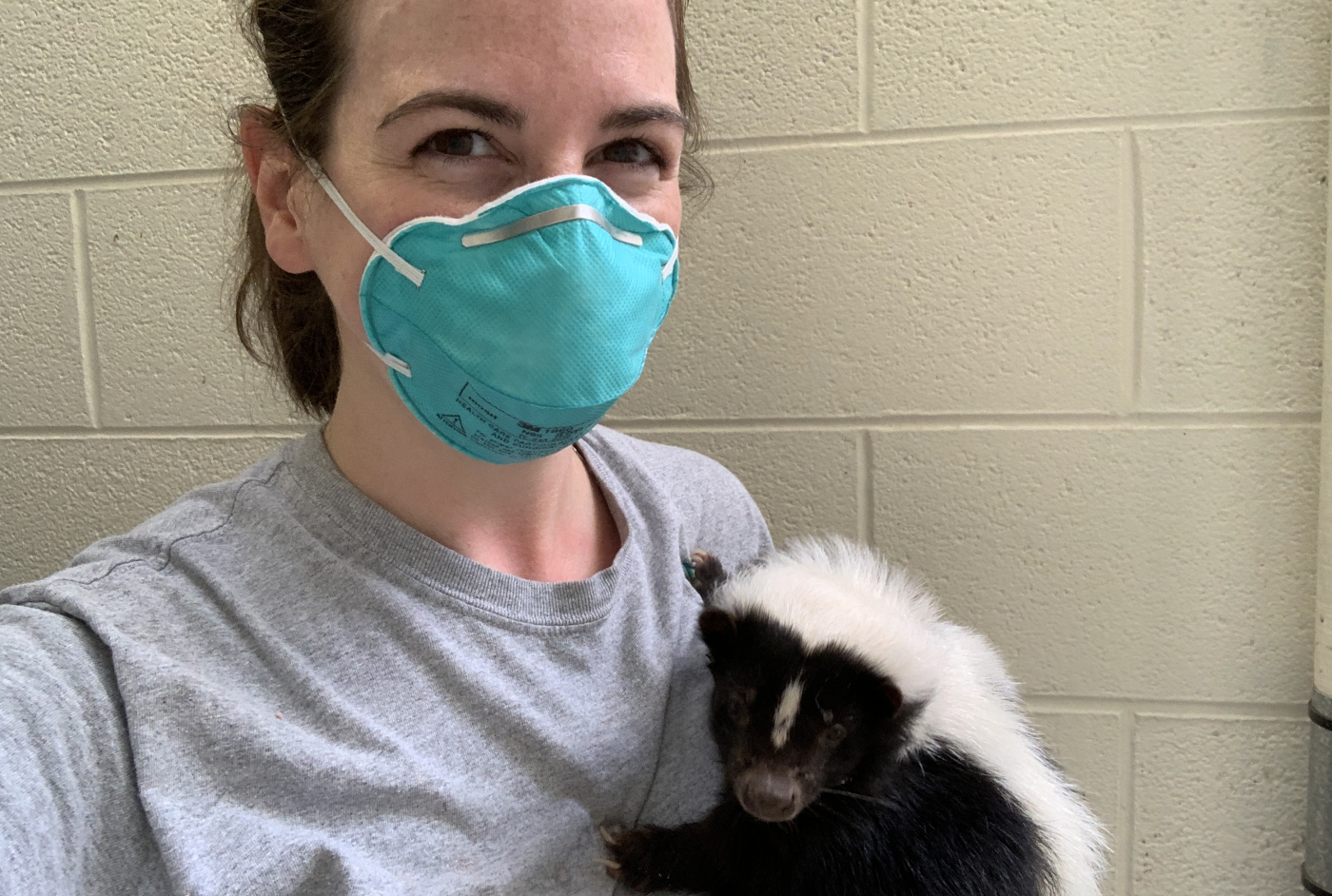
In the wild, animals are constantly stimulated. They have to adapt to changing elements in their habitat (like weather and other animals), search for food and mates, and hide or defend themselves from predators. In human care, all their basic needs are met. It’s up to their caretakers to keep their minds and bodies active while encouraging natural behaviors. We want each of the animals in the Small Mammal House to experience something different every day. Enrichment is something novel for our animals that encourages them to use their natural behaviors and explore their environment.
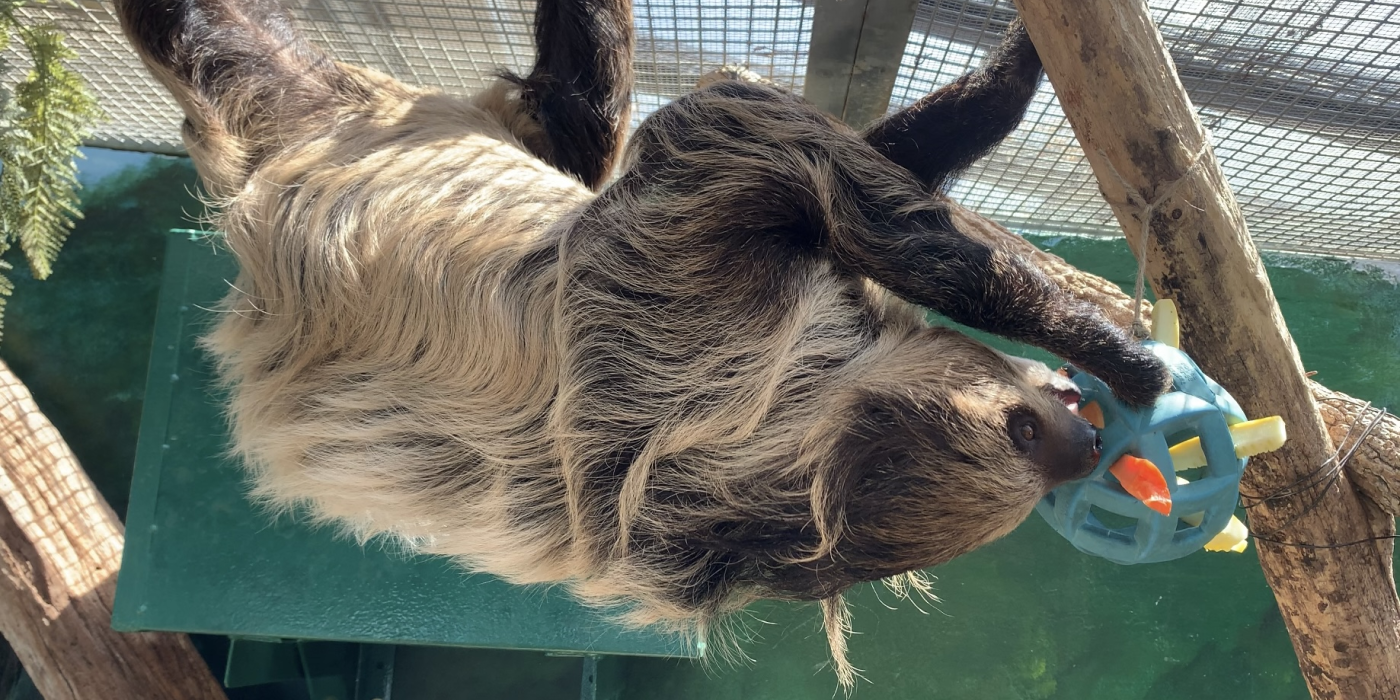
The Small Mammal House is home to a variety of species, from golden lion tamarins and sand cats to prehensile-tailed porcupines and naked mole-rats. We even take care of a couple of birds! Every animal in our care receives enrichment every day. We have an entire room dedicated to enrichment that is filled with a variety of puzzle feeders, bubbles, boxes, paper bags, non-toxic paint, spices and toys you may give your pet at home (like Kongs and hamster wheels). We keep a calendar to help ensure we don’t accidentally give an animal the same enrichment over and over again.
In deciding which enrichment item to give an animal, I always keep in mind their abilities and restrictions. For example, I wouldn’t give our birds a puzzle feeder that requires opposable thumbs to open, or a ground-dwelling naked mole-rat something that hangs. Rodents are notorious for chewing through items, so their enrichment needs to be non-chewable or safe to eat. I also note the size of the openings, as I do not want an animal to get its head stuck in its toy.
One of my goals is to provide enrichment that encourages animals to use their problem-solving skills. Our northern tree shrew, Scrat, seems to enjoy puzzles, and it is a fun challenge for me, as well, to come up with ones that are different and just difficult enough to keep him busy but aren’t frustrating to solve. Tree shrews are the closest non-primate relative to humans and are very smart animals. The time he spends on each puzzle varies. Eventually, though, he figures them out!
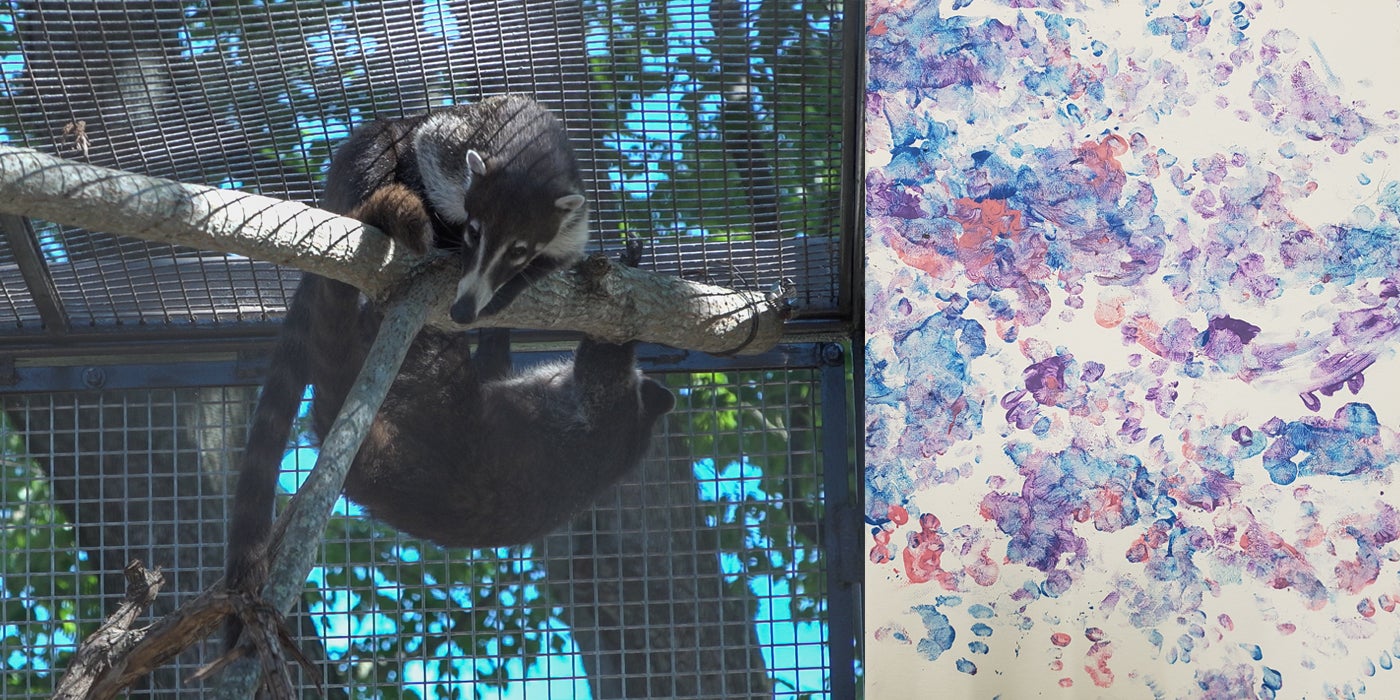
Another great activity that helps stimulate our animals’ senses of sight, smell and touch is painting. For many small mammals, this activity involves stepping into non-toxic, water-based paint and walking across a canvas, leaving their “autographs.” Blue paint is a favorite for our white-nosed coatis, Quinn and Ivy. Often, they will stick their noses in the gobs of paint, or run their tails through it. At the end of a painting session, we have two blue coatis running around!
Coatis cover themselves in scents they like or want to smell like, a behavior known as scent-anointing. In the wild, they may rub poisonous bugs into their fur to mask their scent. They’ll wear a favored scent until it wears off. In addition to blue paint, Quinn and Ivy also seem to like peppermint. If I ever need to quickly move them inside, I can spray some peppermint and they will come right in!
To provide the best enrichment for each animal, we need to understand what each animal engages with most or how to encourage a particular behavior best. Some of our interns were working on a project a few years ago which involved testing various types of enrichment to help us better understand enrichment for chinchillas. They tested mirrors, hamster wheels and dust baths, with the latter engaging the chinchillas the most.
A unique limitation for chinchillas is they cannot get wet. Their fur is very soft and dense to keep them warm in their natural habitat, the high elevations of the Andes mountains. If chinchilla fur gets wet, it can become matted. Instead, they clean themselves with dust! Like the tenrec in the video above, chinchillas will take long, luxurious dust baths. When the interns would place the dust bath, our chinchillas would jump right in and barrel roll for several minutes.
Chinchillas are also nocturnal animals, so they spend most of the day sleeping and seem to enjoy different places to hunker down. Changing or moving the furniture in an animal’s space can be enriching. We give the chinchillas little huts and items with openings for them to hide in.
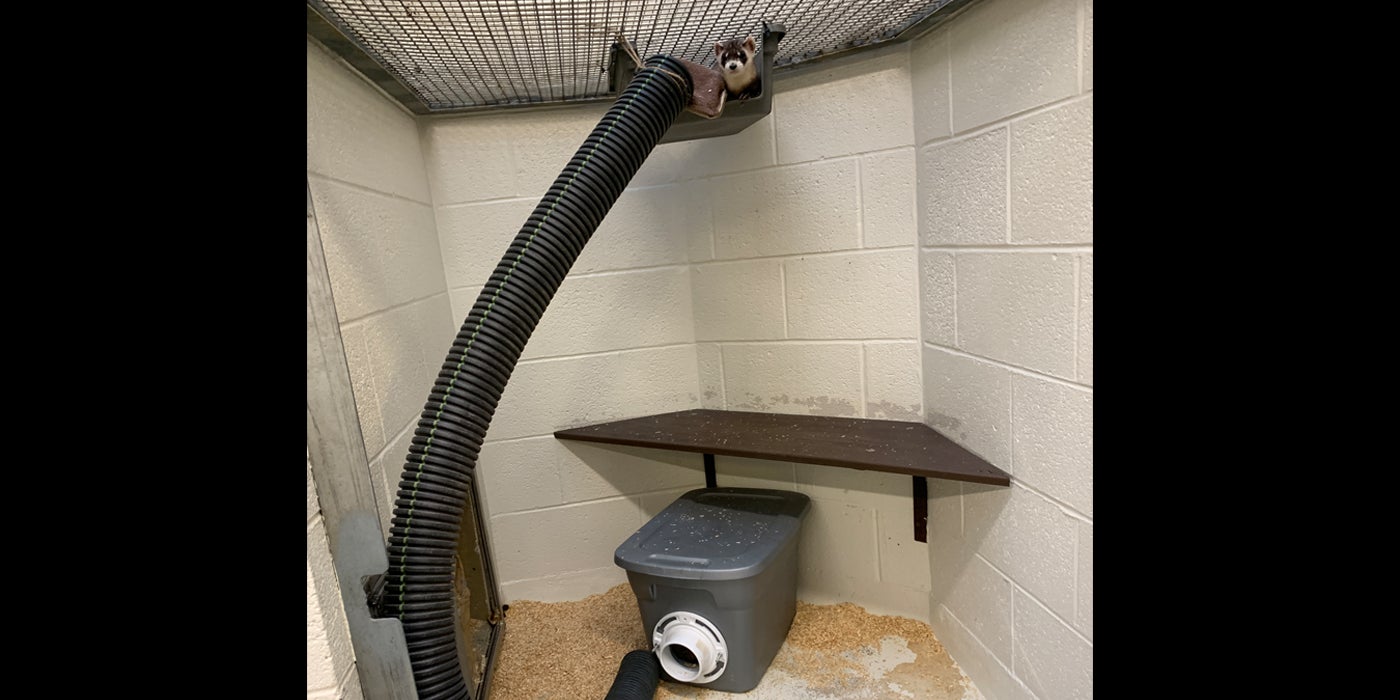
Many of our animals can choose whether they want to spend time in the habitats where visitors can see them or in off-exhibit enclosures behind the scenes. Some animals, like our black-footed ferrets, prefer to sleep behind the scenes overnight. However, that enclosure is so tall the top part was inaccessible. I took the bottom half of a carrying crate and secured it to the top as a den space. Then, I ran a corrugated tube from the crate to the bottom of the enclosure. The setup mimics black-footed ferrets’ natural habitat: prairie dog burrows!
For the first couple of days our black-footed ferret at the time was a little afraid of the new structure, which is normal. Then about three days in, I found her sleeping in the den! It became her favorite spot. She slept there every morning before moving to the public-facing habitat. It only took our current ferret, Cookie, about a day to start sleeping in the den.
Not every animal engages each enrichment item I create, but I love when something that an animal initially perceives to be uninteresting or “scary” becomes their new favorite thing. Because we have a limited number of pre-made items, I have to be creative and come up with ways to make “old” items new again. In the past, I’ve combined items animals normally would not see together (like a whiffle ball inside a puzzle feeder) and used recycled materials to create something new.
Most recently, I have become the Enrichment and Training Committee point person, which includes helping make holiday enrichment in Small Mammal House! Keep an eye on Zoo’s Facebook, Instagram and Twitter, or plan a visit around the holidays to catch some fun and festive enrichment for animals and visitors alike.
Don’t let your curiosity about enrichment stop here! Grow your enrichment knowledge when you pounce into enrichment for great cats.

